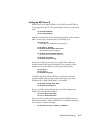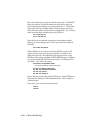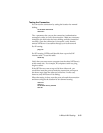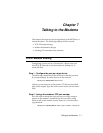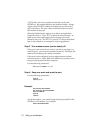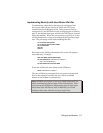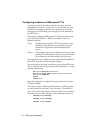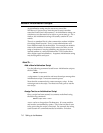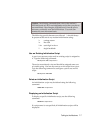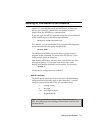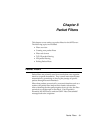7-4 Talking to the Modems
Configuring modems as UNIX pseudo TTYs
A pseudo tty device acts like a serial device, but is actually
something else entirely. In this case, we would like one of the
NETServer’s modems to act like it is connected to one of the
serial ports of a UNIX host, even though it’s really attached to
the NETServer.
There are two different UNIX pseudo TTY device drivers that
work with the NETServer. Both are available on the U.S.
Robotics web site.
nettty This daemon is a pseudo TTY driver used to access
NETServer Host Device ports. Host Device ports
should be configured to use the Netdata device
service.
in.pmd The PortMux login service daemon will also provide
pseudo TTY functionality. Host Device ports should
be configured to use the PortMux device service.
Once obtained, such a daemon must compiled and installed on
each UNIX host that will be using the modems.
You must then set up some host device ports on the NETServer.
This is a special case of the procedure described above. Use the
following commands:
set s<port #> device /dev/<device name>
set s<port #> service_device <
netdata
|
portmux
> <TCP port #>
set s<port #> modem off
save all
reset s<port #>
Note that all ports in a single dial out pool must use the same
TCP port number.
The <device name> field must be the name of a UNIX pseudo-
tty device listed in each host’s /dev directory. The default is
none. This same value must be entered at the host’s command
line when you run either daemon. Some standard entries are:
/dev/ttyp0
through
/dev/ttypf
/dev/ttyq0
through
/dev/ttyqf
/dev/ttyr0
through
/dev/ttyrf




